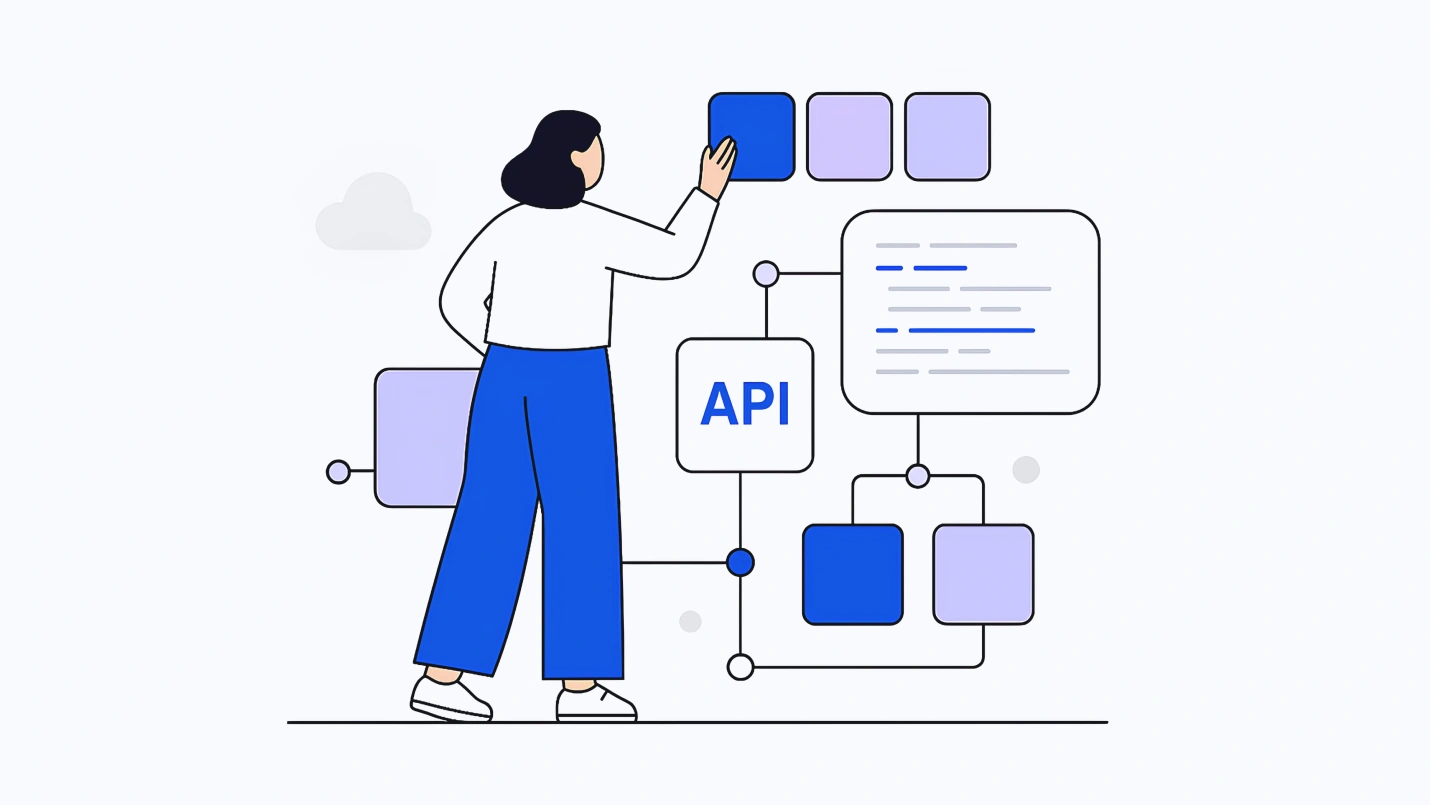Summary: In the present market dynamics, no organization can afford a slowdown. Organizations have to work to adapt to new technologies for market-driven growth. Clear, strategic plans are needed to gain a competitive edge. Businesses must leverage existing data stacks and build innovative, scalable platforms. Data architecture, therefore, assumes utmost importance. Composable architecture is a promising path to speedy, efficient, and agile development. Read on to find out more about this.
Uncertainty is the new normal. Businesses are forced to continually evolve against external pressures in the market, business, technology innovation, and changing consumer needs. Increasing agility in products and services is one of the top executive priorities for 2023.
To deliver this agility in products and services, this level of innovation and personalization, businesses are turning to more flexible (or composable) technology in their architecture. Composability is a design principle that builds a whole from individual modular parts. Businesses can be composable. But so can apps and content management systems (CMS).
Composable architecture promises to assist in speeding the time to market new apps and digital experience platforms to help organizations achieve agility goals. In this blog, we will explore everything related to composable architecture and how to frame composable architecture against the landscape of similar terms, including headless, modular, and microservice architecture.

We respect your privacy. Your information is safe.
What is Composable Architecture?
To answer the question of what composable architecture is, it is helpful first to understand how the term composability is being applied at the business level. Gartner defines a composable business architecture as having three parts:
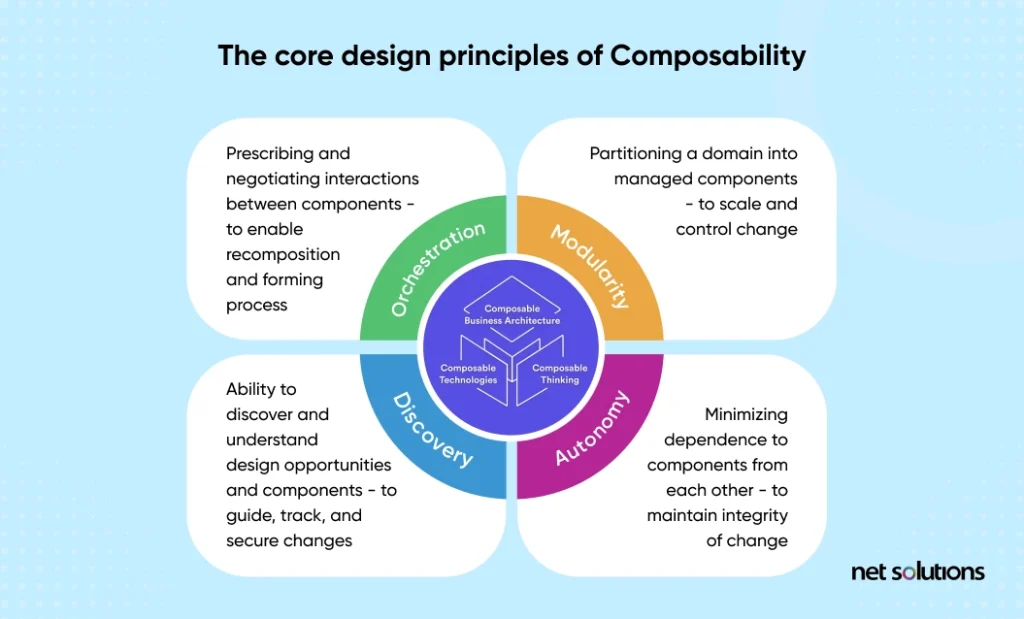
- Composable thinking looks at creating business capabilities through the continuous exploration and movement of components.
- Composable business architecture that dynamically adjusts people/processes/capabilities/products and services to be flexible and resilient.
- Composable technologies that have modular components where assembly and reassembly are easy – the foundation of supporting composable business architecture.
As one of the core pillars of composable enterprise architecture, composable technologies focus on component-driven development, building components that can be used and re-used to adapt to changing needs. Gartner suggests that over 75% of small-mid SaaS development companies will use packaged business capabilities to accelerate their time to market.
By 2023, 30% of new applications will be delivered, priced, and consumed as libraries of packaged business capabilities, up from less than 5% in 2020.
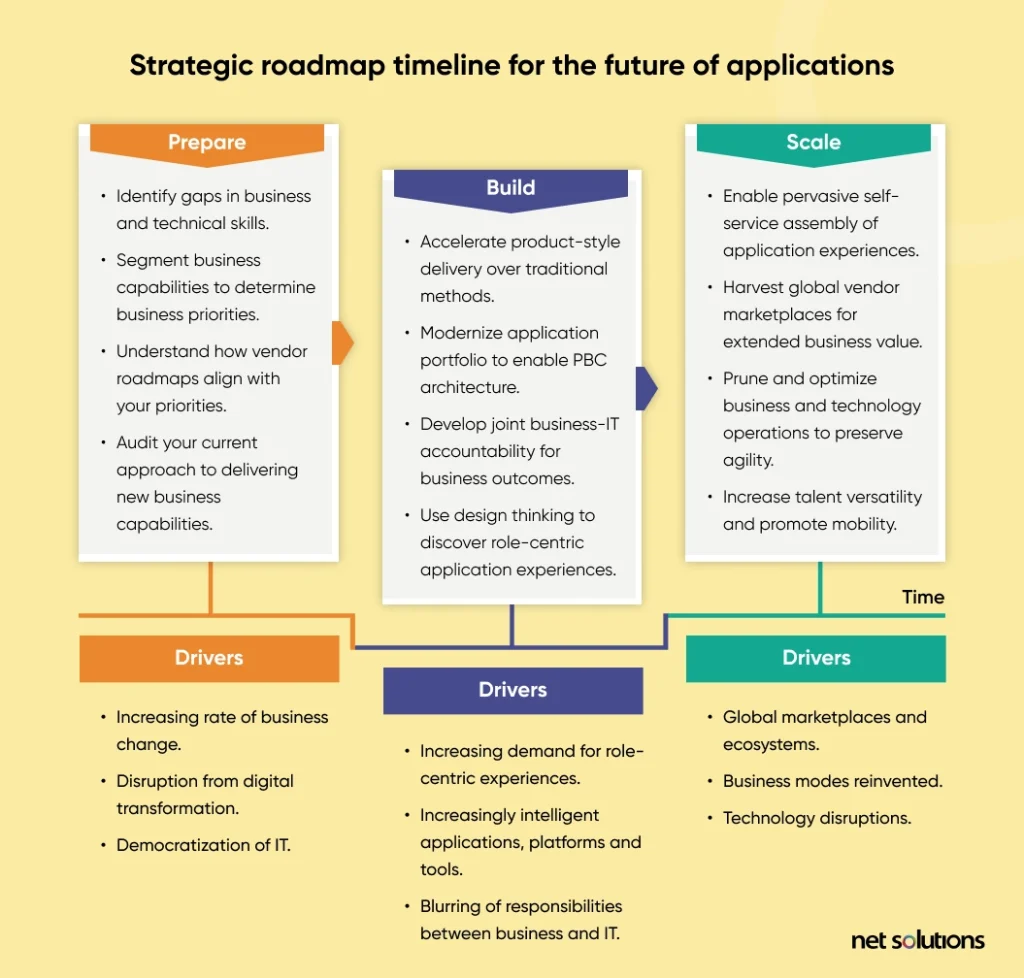
Composable architecture is an extension of this premise in practical terms for development – the idea that a set of autonomous modular components (microservices, headless applications, or packaged business capabilities, aka PBCs) can be assembled to form a complete system. The modular approach allows developers to reuse more code and components, saving time and money and making it easier to scale, maintain, and improve systems in the future.
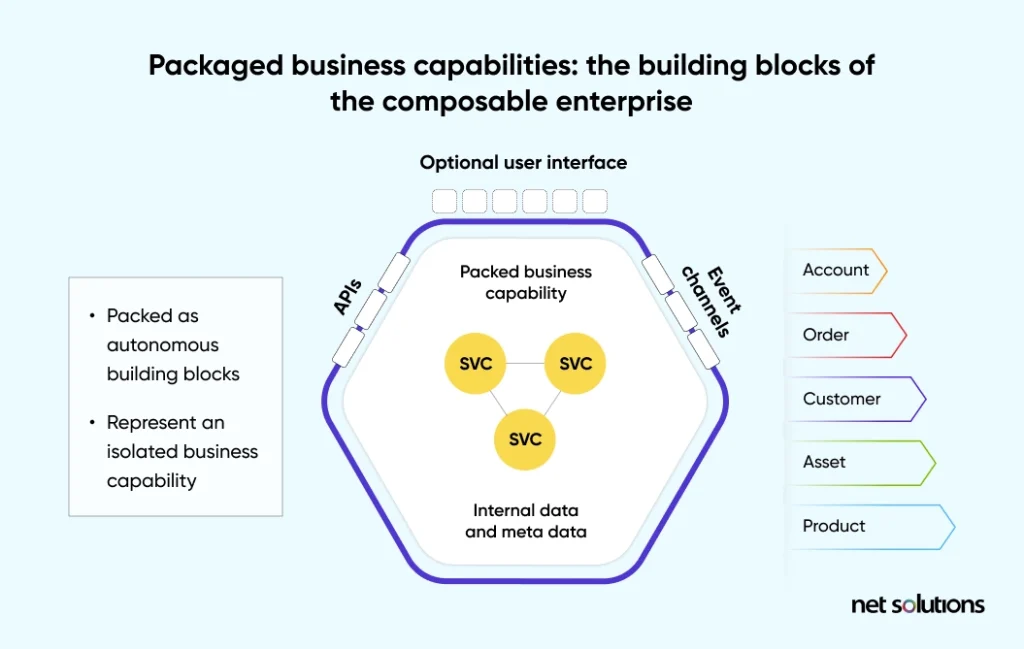
With traditional (or monolithic) architecture, the front (user interface or ‘head’) and back ends are all coupled into one code base. With composable architecture, the front is decoupled from the back. If this sounds like headless commerce, it’s correct. However, headless alone was not enough to meet the changing demands of today’s consumers.
While headless remains one piece of composable architecture, composable architecture is an evolution that also includes the ability to incorporate microservices – discrete modules within the technology stack. The architecture must follow the MACH approach outlined in the next section to be genuinely composable.
Traditional / Monolithic vs. Headless vs. Composable
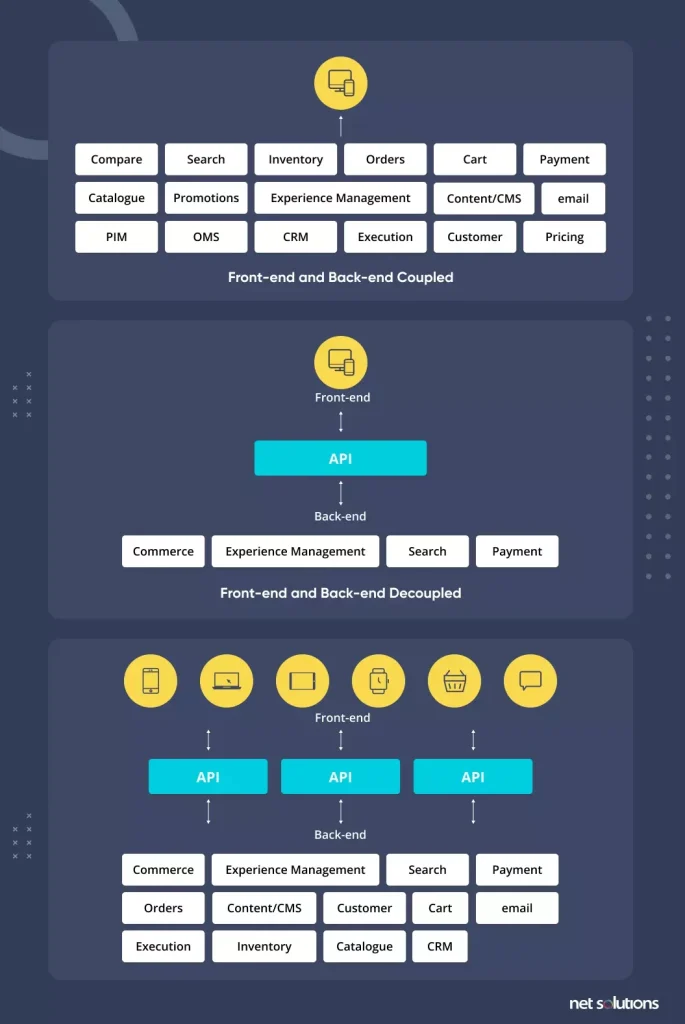
Characteristics of Composable Architecture: The MACH Approach
Composable architecture is based upon MACH, a group of principles or technologies that, when used together, supports a composable architecture.
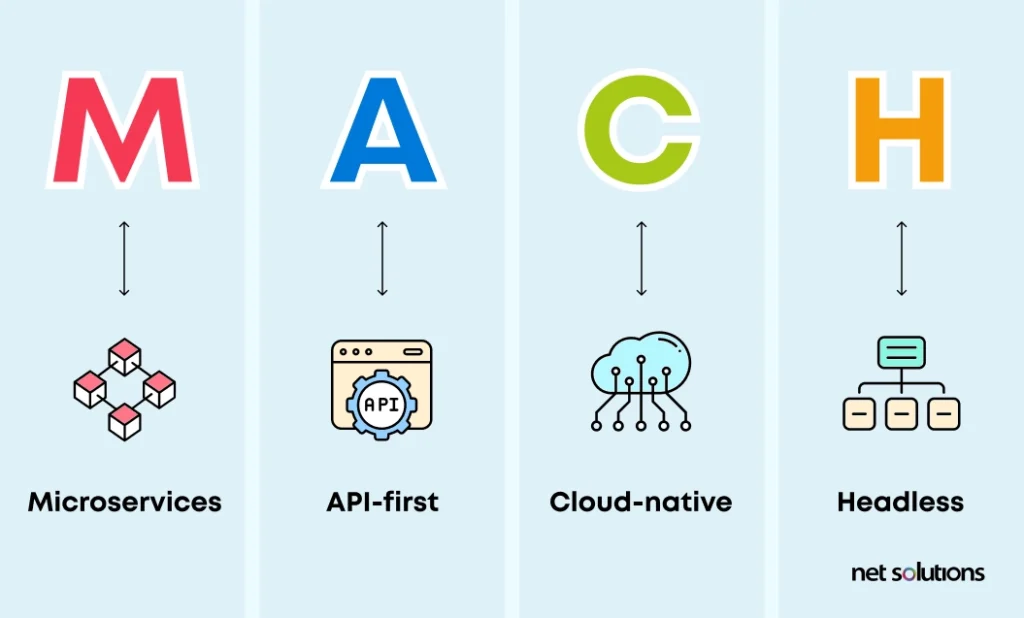
- M – Microservices
Microservices are independent services that deliver specific functions or features connected via API. A packaged business component (PBC) is a set of two or more microservices accessed by a single API (e.g., a bundle of the shopping cart and checkout). Both individual microservices and PBCs can be considered a module. - A – API-First
The API ties two or more applications or services together, a way of communicating that is baked into the approach to development. - C – Cloud-Native
Applications or services are made specifically to exist in the cloud to ensure scalability and agility. - H – Headless
The front-end and back-end of the application have been decoupled. They are connected via API, giving more flexibility and choice over languages and technologies used for each and making it easier to expand to new channels or devices as needs arise.
Examples of Composable Architecture
Composable commerce architecture is one of this new approach’s most commonly cited uses, supporting an agile approach to offer rich & real time digital & personalized experience. Composable digital experience platforms are revolutionizing the ability to deliver these experiences with speed and across a variety of channels. Modern eCommerce platforms (e.g., Magento 2, Drupal, Shopify, BigCommerce) often rely on extensive third parties for various services, allowing brands to choose best-of-breed solutions (PBCs) and to upgrade each component independently of the rest:
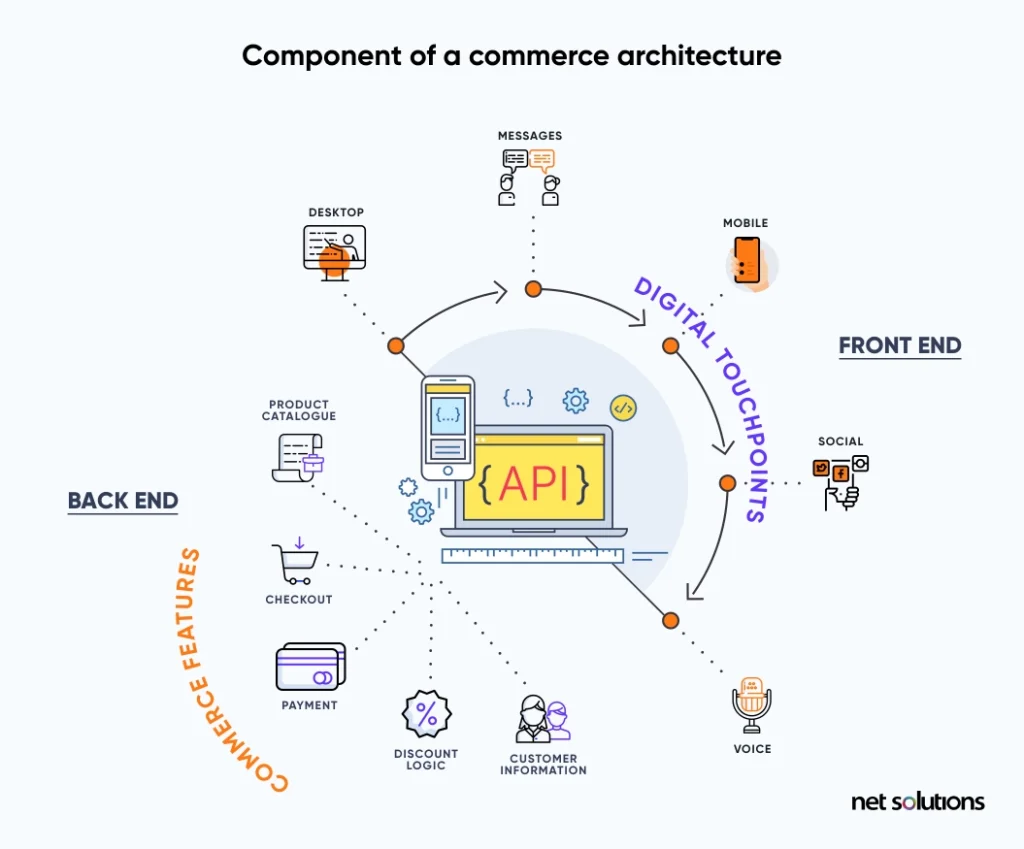
Benefits of Composable Architecture
Gartner notes that the principles of a composable business architecture are speed, agility, better leadership, and greater resilience. These principles, when translated to compostable architecture, translate into tangible benefits, including:
1. Scalability
When considering composable architecture, scalability is often one of the key drivers. In this architecture, each component is designed to be plug-and-play with other components, allowing for each independent component to scale independently or be replaced as needed. The ability of each component to scale independently allows for a better performance of the app as a whole and is more cost-effective.
2. Flexibility
Decoupling a system’s front and back ends allows greater freedom of choice in choosing various microservices and PBCs without worrying about compatibility. As needs change, it’s easy to swap out or update a service without worrying as much about integration – instead, the APIs do the bulk of the work communicating between systems.
3. Modular
Code and third-party services form independent modules, remaining decoupled and easily swapped for other modules over time. Further, this approach reduces time-to-market, allowing code to be reused or no-code solutions to be deployed to add new features or build new websites in record time.
4. Reusable
The key foundation of composable architecture is the concept of reusable components. This strategy’s foundation is defining standards and patterns that can be reused and APIs that can bring everything together. This requires a different approach to designing systems that focuses on reusability at its core. In this way, any modules created can be reused or form the basis of new applications or services.
5. Improved maintainability
Changes can be made to one module or service easily without impacting the entire system. Further, having an intuitive CMS allows marketing greater autonomy to make changes to site design, freeing up precious IT time for more value-added activities. Further, from a maintenance perspective, having independent microservices allows the business to become more fault tolerant, where any performance issue or service issue in a single component will not impact the entire system.
6. Faster development and deployment
The ability to reuse components, leverage components from libraries, and integrate third-party services (PBC) results in faster development time. Further, changes can be made without impacting the entire system. But the top reason that speed is improved is that each function can be autonomously developed and served to support multiple products in the organization – so a “search” function developed for one product can support another, and these smaller releases can be shipped to production at higher velocity.
Challenges of Composable Architecture
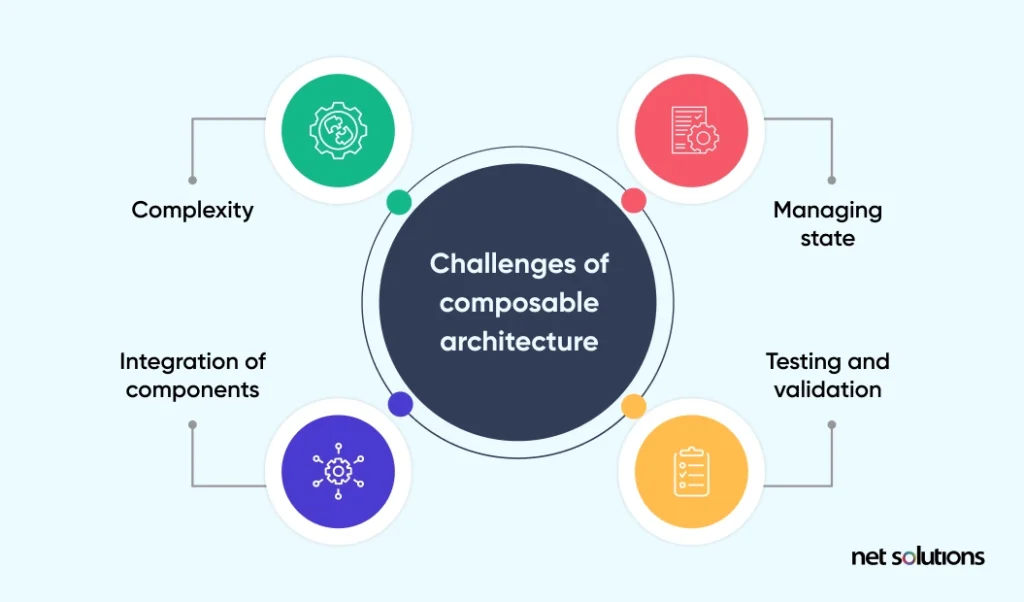
While there are many apparent benefits to composable architecture, there are challenges one must consider as well:
1. Complexity
While the modular nature of composable architecture helps speed time to market by allowing teams to work on or integrate independent components, this does introduce some complexity in terms of overseeing the way all the pieces move and fit together. There is a requirement for strong APIs and integrators to support the overall system and greater oversight over each microservice to ensure it remains updated and patched and that it continues to be the best option to serve the needs of the business.
2. Integration of components
It is critical that each component is assessed as the best for the business and easily integrated to ensure underlying data can be used and processes are smooth. To ensure the smooth integration of components, it is essential to have strong integrators on the team or to seek partner expertise and support to assist along the way.
3. Managing state
As applications grow in size and complexity, relying on more independent parts or running asynchronous operations, managing a shared global state becomes more challenging. Many state management libraries can help, but the most significant advice is to avoid using the global state for everything – instead, use the right tool for the job. Many helpful articles on managing state for each framework and library (e.g., React, Swift, etc.) exist.
4. Testing and validation
It is important to bake in testing that looks at each feature in the architecture and integration tests for features composed of many parts to ensure everything is running as expected and that there are no side effects on the application. A composable architecture system will have more parts, which requires more testing and validation.
Implementing Composable Architecture
Assessment of existing systems
Before any work is done, the first step of implementing composable architecture is to understand the current state of systems: what capabilities, technologies, and processes have already been built within the organization. This is your inventory of what is available to help meet the demands of the new or improved system. At this stage, organizations may include:
- A business capability map, breaking down capabilities into the smallest units possible.
- Suppose the composable architecture is meant to replace an existing system. In that case, the assessment should improve not only inventory capabilities but also value streams to know what the app does well and where it’s missing the mark to improve.
- A user review of user stories and the customer journey is important, regardless of whether the app is new or replaces an existing one.
Designing a composable architecture
Business analysts (or architects), designers, and developers work together to conceptualize and design a solution architecture to turn the idea into reality. During this stage, the business capability map is expanded upon, establishing each component in its smallest part with a clear business value. These pieces can then be combined into PBCs, defining a business capability. These modules and PBCs will form an inventory, or library, that the business can use.
Experts can then work on a plan for team(s) to build each module and configure them for various use cases. This phase should respect the characteristics of MACH and the key benefits that drive a composable architecture.
Building reusable components
During this stage, team(s) execute plans (ideally through an Agile DevOps plan) to build components. This is a build-and-repeat section where components are built and integrated until a minimum viable product is achieved. At this stage, it’s important to adhere to best practices for composable architecture, including:
- Have clear documentation
- Build modular components with little to no dependencies
- Define clear interfaces
- Establish clear boundaries
Integrating components into a cohesive system
Once components are built, they must be combined and “glued” via APIs. An Application Programming Interface (API) communicates between two components or applications, transferring requests and information. With composable architecture, APIs are used to integrate components, and having a strong API management platform can simplify API management onto a single platform and allow greater security control.
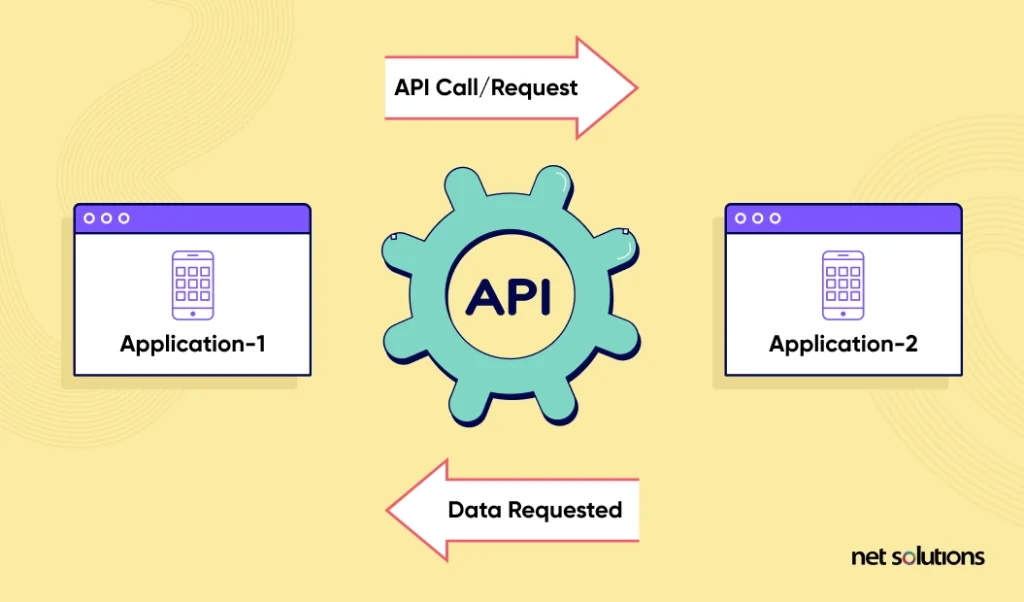
Automating tests and validations
Any architecture is only as strong as it is tested to be – and thankfully, the lack of dependencies in composable architecture lends itself well to testing. In the Swift Composable Architecture, a testing framework is shipped and companies within the Composable Architecture. With React composable architecture, you can render component trees in a test environment or run end-to-end tests, with additional testing supported by free and paid tools.
Types of Composable Architecture
Swift composable architecture
Swift is a programming language created by Apple for building iOs, Mac, Apple TV, and Apple Watch apps. Swift provides a set of protocols and tools to support composable architecture by default, known as The Composable Architecture (TCA). The Swift composable architecture includes feature and integration testing, state management, a modular code to support the composition of features, and a very friendly developer interface.
React composable architecture
React is a JavaScript library widely used for composable elements, particularly for front-end development of the interfaces and elements that users interact with. React stresses that composability is one of its core principles, stressing that components written by different people should work well together.
Key Takeaways
Composable architecture is like insurance against change – a way to embrace future uncertainty by having agility backed into the foundation of each system. The composable architecture allows organizations to become agile, adopting best-of-breed solutions and adapt to new technologies and consumer demands.
Within two years, cloud-native platforms will serve as the platform for more than 95% of new digital initiatives, up from 40% just last year – if built with composable architecture, these initiatives will accelerate time-to-market and have the agility to change far into the future. If you want to spin up your digital initiative, or switch to composable architecture for the foundation of your success, reach out to see how we can help.
Frequently Asked Questions
Composable architecture is helping bring more agility to organizations to respond to fast-moving demands and opportunities in the market. It allows organizations to upgrade existing systems or reduce time-to-market on new solutions quickly. Further, composable architecture helps break down silos between departments and streamline all workflows.
Modularity refers to components that can be consumed and used independently, a core functionality of composable architecture. You can have modular front ends components (e.g., blog, website, forum) and channels (e.g., mobile, web) and modular back-end services (e.g., shopping cart, payment, product catalog, etc.). Composable architecture is the ability to combine modules.
Headless architecture decouples the front and back end and is one of composable architecture’s four fundamental MACH (microservices, API-led, cloud-first, headless) components.
Microservices refer to modular back-end services that support a decoupled (headless) architecture that is part of the core of compostable architecture. Sometimes compostable architecture is referred to as headless microservices.

